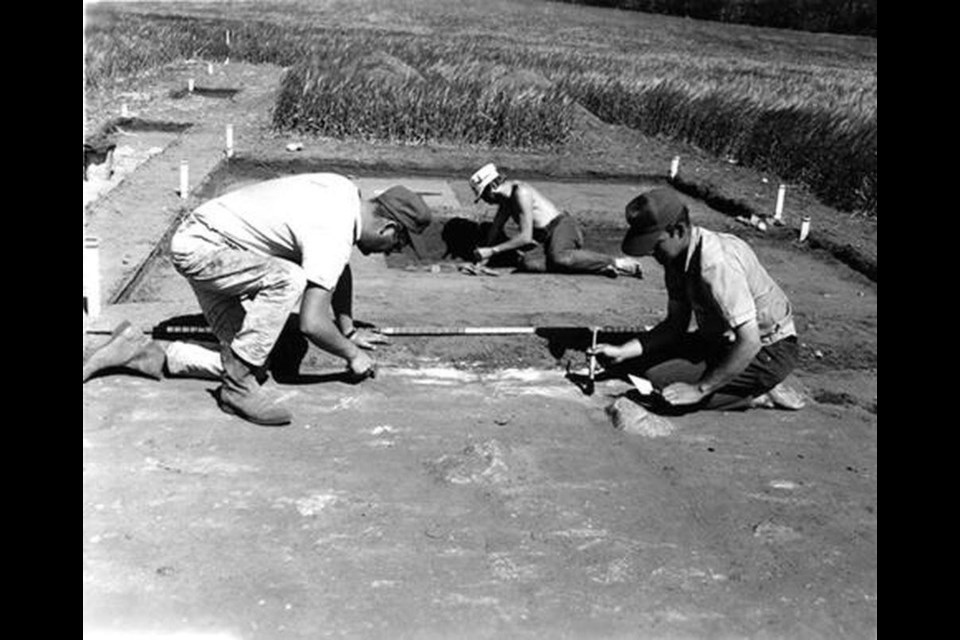KAMSACK - The two hundredth anniversary of the union of the Northwest (NWC) fur trading and the Hudson Bay Company (HBC) occurred in 2021. This union, which initially took place in 1821, had a great effect on the settlement of Europeans in Western Canada, changing lives in the Kamsack, Canora, Pelly, and Sturgis area. This area was known as the upper Assiniboine area. At the time, it had about fifteen fur trade posts, forts, and a factory fort. The area was primarily the Assiniboine Watershed as it is known today. It also would include a part of western Manitoba. The fur trade forts in this area which are currently best known are Fort Tremblante - located approximately eight miles south of Kamsack, Fort Alexandria - located 13 miles north of Canora, and Fort Carlton - located on the north side of the Assiniboine and north of Fort Alexandria.
The early fur trade refers to the period prior to the amalgamation of the two primary fur trade companies in 1821. Life was very busy and competitive. There were also smaller traders aside from the NWC ad HBC. Forts or posts were built into the far reaches of the navigable rivers. This was done to reach the First Nation traders before the competition could. When one post was built, a competitor would build one on the opposite side of the river. The numerous forts would try to ensure that people would not lose furs on account of 小蓝视频 too distant from a First Nation fur trader. Competition was fierce. First Nation traders could get the best deal when they played one trader against another and First Nation families were encouraged to settle around the forts. This might ensure that the trapper would return to the fort with furs. It also secured a labour force to prepare plenty of food and furs for market. This theory is reinforced by the fact that many artifacts from the fur trade period are found in the perimeter of the forts – the area where First Nation families typically lived.
This fur trade area – the upper Assiniboine – was the third oldest continuously settled by Europeans in Saskatchewan. Only Ile La Crosse and Cumberland House were older. Of course, there were older settlements in what is now Manitoba. The upper Assiniboine have records of fur trade settlements dating into the last quarter of the 1700s.
Details of life and artifacts in the area are chronicled in several diaries. The most widely quoted were the diaries of Daniel Harmon. Harmon ran forts north of Canora and the Swan River area. CBC re-enacted some of his documented activities in its series on the history of western Canada.
An archeological dig was conducted at Fort Riviere Tremblante, south of Kamsack during the summer of 1967. Hugh Mackie of Hudson Bay was the lead archeologist. Al MacDonald of Yorkton also worked on the dig. The results are printed in the report on the Riviere Tremblante NWC 1791-1798. Forts Carlton and Alexandria were surveyed locating the exact walls, gates, bastions and other details. The artifacts collected on the surface have been donated to the Canora museum. Among these donations are a number of musket parts, flints, rings, beads, buttons, snare wire, tobacco pipes, nails, buckles, and more. A university report is available as well as a presentation made by Access TV. In all, we have a very detailed idea of life prior to 1821 on the upper Assiniboine.
Eventually, the profits from furs and their supply would dwindle. Competition between HBC and NWC was fierce, leading to violence and murder. Competition from the Americans and Russians, as well as smaller competitors like the XY Company was increasing. Shareholders from the NWC tried to buy controlling interest in the HBC. Even though the HBC was run less efficiently, it had the advantage of having a port almost in the middle of the continent. After heavy negotiations, the HBC and the NWC were merged. The fur trade became more efficient. A HBC man, George Simpson, known as “The Little Emperor” quickly consolidated the companies by 1821. He began the process of renegotiation and efficiency.
After 1821, duplicate forts were eliminated. In fact, only several large forts were built or expanded. This included Fort Pelly, Fort Carlton near North Battleford, and Fort Saskatchewan in Edmonton. These represent the later fur trade period. The new Fort Pelly wasn’t settled until 1824. It was to be the only fort in the Swan River region. The numerous forts across the west were gradually shut down. Many would be used until the buildings were beyond repair. So, Fort Alexandria would have been used until about 1830. Because it was such a significant location, the Fort Alexandria site was still visited by old HBC men like John Gunn and W.J. MacDonald. Gunn retains his name at a beach at Good Spirit where his ancestors ran an HBC store.
The new fur trade period resulted in many less workers. Fort Pelly became the sole and major supplier of goods and only buyer of furs. Indigenous people had to travel longer distances and do more work preparing furs and food. Fort Pelly became the supply store for livestock and tools when the first ranchers and farmers arrived. Eventually, Fort Pelly was phased out when a new Hudson Bay store was opened in Yorkton in 1911.
1821 remains the dividing point between the old fur trade and the new fur trade periods. The new fur trade period, marked by the building of the new Fort Pelly, introduced a period of less competition, less activity, and less revenue for First Nations traders. However, it did represent more profit for the new Hudson Bay Company.




